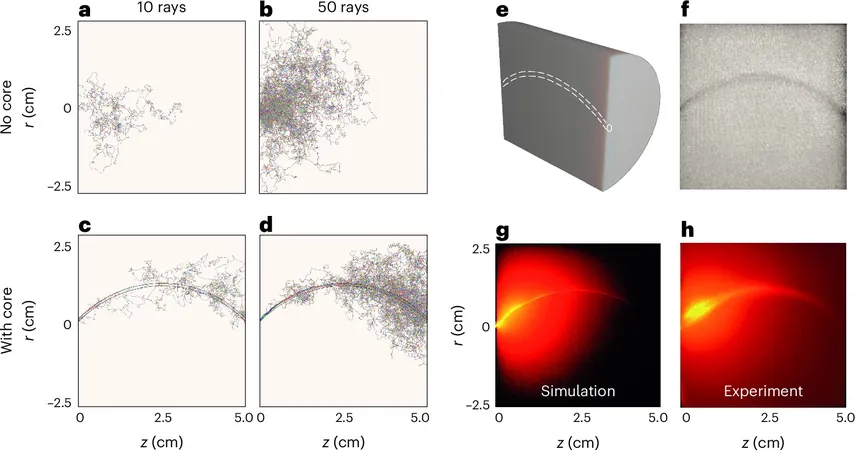
Breakthrough Discovery: How ERAP1 Allotype 10 Impacts Autoimmunity
2024-11-08
Author: Siti
Breakthrough Discovery: How ERAP1 Allotype 10 Impacts Autoimmunity
In a fascinating study published by Newswise, researchers have unveiled significant insights into ER aminopeptidase 1 (ERAP1), a crucial enzyme involved in immune system regulation. This polymorphic enzyme plays a pivotal role in antigen presentation—a process vital for the body’s adaptive immune responses. Among its various forms, allotype 10 has emerged as a star, providing remarkable protection against certain autoimmune conditions while showcasing intriguing enzymatic characteristics.
Examining Unique Polymorphisms
To dive deeper into the biology of allotype 10, scientists focused on its specific polymorphisms: V349M and Q725R. These mutations appear to have a profound effect on the enzyme's performance. The study highlighted that while allotype 10 demonstrates significantly reduced efficiency in trimming smaller substrates, it compensates for this deficiency through allosteric kinetics, meaning it can still function effectively under high substrate concentrations.
Inhibitory Mechanisms and Activity Variation
Remarkably, allotype 10 is influenced by a transition-state analogue in a non-competitive manner, suggesting a unique pathway for inhibition compared to its predecessor, allotype 1. Additionally, researchers found that it exhibited contrasting behaviors in terms of enthalpy, entropy, and activation heat capacity when compared to allotype 1. This means that the conditions under which the enzyme operates are fundamentally different, affecting its overall enzymatic activity.
Another key finding indicates that the catalytic rate of allotype 10 is highly reliant on the viscosity of its environment. This significant detail emphasizes the practical relevance of these polymorphisms, particularly in high viscosity situations where enzymatic activity may vastly differ.
Contributions of V349M and Q725R
The polymorphisms V349M and Q725R are crucial as they contribute notably to the reduced enzymatic activity of allotype 10 concerning small substrates. Their presence appears to affect not just how the enzyme interacts with substrates but also how it coordinates activities between its active and regulatory sites. This regulation of viscosity dependence is vital for understanding how the enzyme facilitates or hinders autoimmunity.
This research highlights the complexities of autoimmune responses and opens up new avenues for potential therapeutic interventions. Understanding the role of ERAP1 allotype 10 could lead to innovative strategies in treating autoimmune diseases. As discoveries in immunology continue to unfold, scientists are hopeful that such insights will pave the way for groundbreaking medical advancements in managing autoimmunity.


 Brasil (PT)
Brasil (PT)
 Canada (EN)
Canada (EN)
 Chile (ES)
Chile (ES)
 España (ES)
España (ES)
 France (FR)
France (FR)
 Hong Kong (EN)
Hong Kong (EN)
 Italia (IT)
Italia (IT)
 日本 (JA)
日本 (JA)
 Magyarország (HU)
Magyarország (HU)
 Norge (NO)
Norge (NO)
 Polska (PL)
Polska (PL)
 Schweiz (DE)
Schweiz (DE)
 Singapore (EN)
Singapore (EN)
 Sverige (SV)
Sverige (SV)
 Suomi (FI)
Suomi (FI)
 Türkiye (TR)
Türkiye (TR)